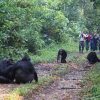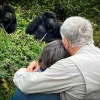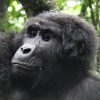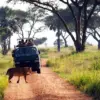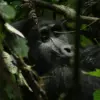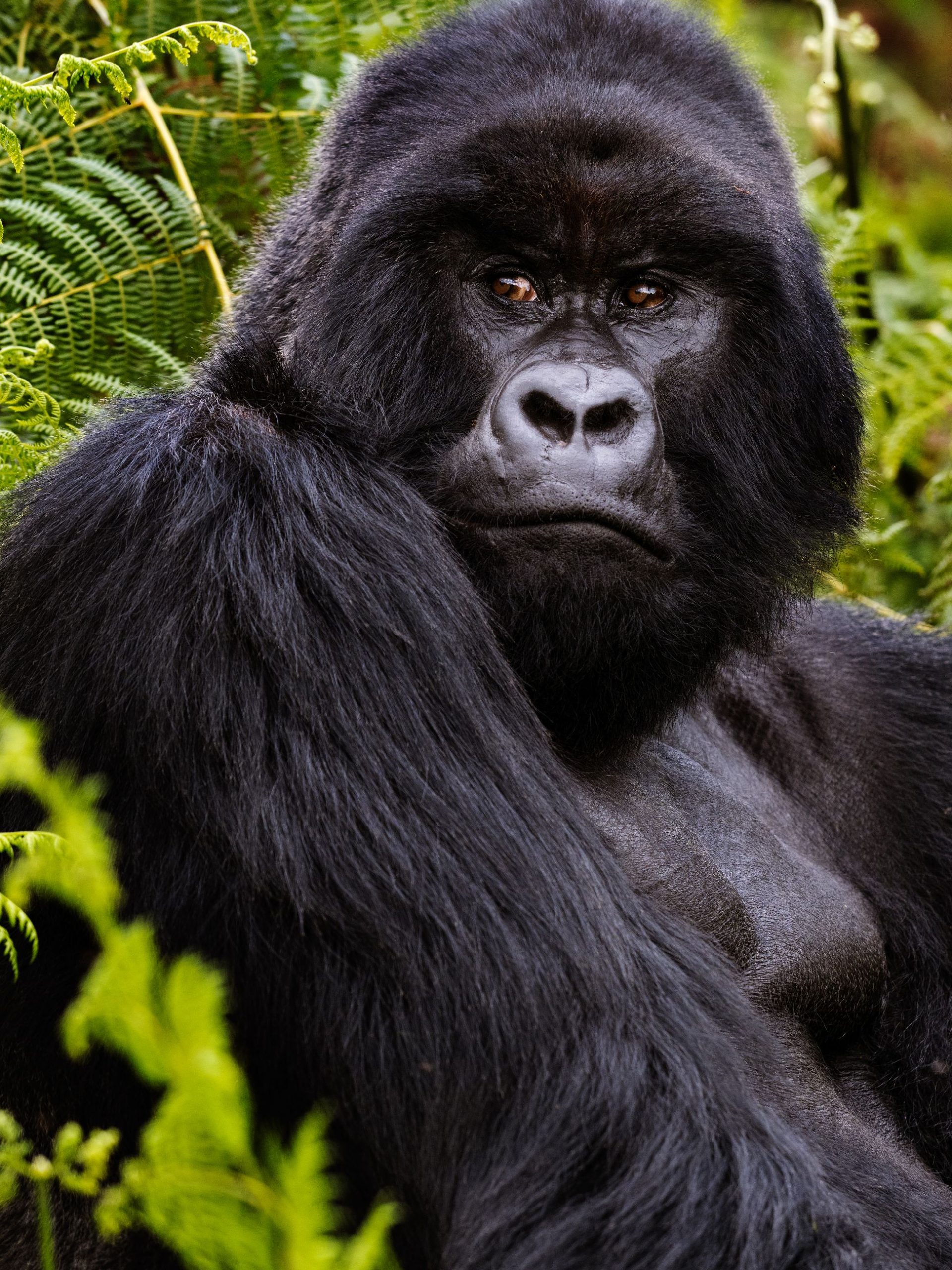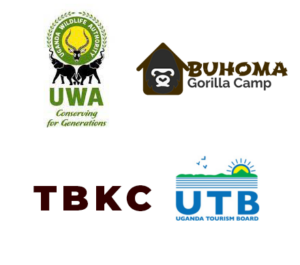Uganda’s gorilla trekking is one of the most sought-after wildlife experiences in Africa, drawing travellers from across the globe who dream of standing face-to-face with the endangered mountain gorillas. With more than half of the world’s remaining gorilla population living within its borders, Uganda has built a reputation as the ultimate destination for gorilla encounters. While Rwanda also offers excellent gorilla trekking experiences, Uganda has managed to take the lead in popularity. The reasons lie not only in the number of gorillas and trekking sectors but also in affordability, accessibility, diversity of experiences, and the overall safari appeal the country offers.
Gorilla Trekking in Uganda
Uganda is home to the Bwindi Impenetrable National Park and Mgahinga Gorilla National Park, two incredible sanctuaries where mountain gorillas thrive. Bwindi, often referred to as the “ultimate gorilla trekking capital of the world,” is divided into four trekking sectors: Buhoma, Ruhija, Rushaga, and Nkuringo. Each sector offers different gorilla families, levels of terrain difficulty, and unique experiences, giving trekkers a chance to choose the kind of adventure they prefer. Mgahinga, though smaller, is equally rewarding and has the Nyakagezi family, which is habituated and open to visitors. Uganda currently has over 20 habituated gorilla families, making it easier to secure permits and giving trekkers a higher chance of availability. Beyond just gorillas, Uganda also offers complementary attractions such as golden monkey trekking, chimpanzee tracking, and classic savannah safaris, which add more depth to the trekking experience.
Gorilla Trekking in Rwanda
Rwanda’s Volcanoes National Park is another world-renowned gorilla trekking destination. Located just a few hours from Kigali, it is highly accessible for visitors who have limited time. Rwanda has about 12 habituated gorilla families, offering intimate trekking encounters. The trekking itself is relatively less strenuous compared to Uganda, as most of the gorilla families live in bamboo forests with less dense vegetation than Bwindi’s thick jungle. However, Rwanda has marketed itself as a luxury destination, positioning gorilla trekking as an elite adventure for high-end travellers. While this exclusivity has its charm, it also narrows the audience compared to Uganda’s broader appeal.
Why Gorilla Trekking is More Popular in Uganda?
Uganda’s popularity in gorilla trekking comes down to a combination of factors. First, Uganda has the largest gorilla population, which naturally makes it the prime destination for this activity. Travellers are reassured that they have more options for permits and trekking locations. Secondly, Uganda’s permits are significantly cheaper than Rwanda’s, making it more accessible to midrange and budget travellers. Third, Uganda provides a more diverse safari product. Travellers can combine gorilla trekking with big game safaris in Queen Elizabeth National Park, chimpanzee trekking in Kibale Forest, and a visit to the source of the Nile in Jinja. This combination of activities makes Uganda more appealing to tourists seeking a complete African adventure.
Cost of a Gorilla Trekking Permit
One of the biggest differences between gorilla trekking in Uganda and Rwanda is the cost of a permit. In Uganda, a gorilla trekking permit costs $800 as of 2025, while in Rwanda, the cost stands at $1,500. This stark difference means that Uganda attracts a broader category of tourists, from backpackers to midrange travellers and luxury adventurers. The gorilla trekking permits in Uganda are issued by the Uganda Wildlife Authority while in Rwanda, the permits are issued by the Rwanda Development Board. Rwanda’s permit pricing has positioned it for high-end tourism, but Uganda’s affordability without compromising the quality of the experience makes it the most popular choice. Additionally, Uganda offers discounted rates during low seasons and has special permits for East African residents, making the trek more accessible.
Best Time to Do Gorilla Trekking
Both Uganda and Rwanda are year-round destinations for gorilla trekking, but the best time is during the dry seasons, which run from June to September and December to February. During these months, the forest trails are less slippery, and trekking is more comfortable. Uganda, with its dense forests in Bwindi, can be particularly challenging in the rainy seasons of March to May and October to November. However, trekking during the wet season has its own charm, with fewer crowds, discounted rates, and lush green landscapes. Travellers often prefer Uganda because even during the rainy season, the country remains vibrant with other safari opportunities that complement gorilla trekking.
Accessibility and Trekking Experience
In terms of accessibility, Rwanda seems more convenient since Volcanoes National Park is just a two-hour drive from Kigali International Airport. Uganda’s gorilla parks are located further, about 8 to 10 hours from Entebbe or Kampala by road. However, Uganda has addressed this challenge by offering scheduled domestic flights from Entebbe and Kampala to airstrips near Bwindi and Mgahinga. Interestingly, many travellers see the long road trip in Uganda not as a disadvantage but as part of the adventure, since it passes through scenic landscapes, lush plantations, and cultural encounters along the way. The trekking experience in Uganda is also more varied, with dense jungles, steep hills, rivers, and misty landscapes that make the adventure feel wilder and more authentic.
Diversity of Safari Experiences
What sets Uganda apart from Rwanda is the wide range of experiences available beyond gorilla trekking. While Rwanda primarily focuses on gorillas, Uganda offers a complete safari package. After trekking gorillas in Bwindi, one can head to Queen Elizabeth National Park for game drives to spot lions, elephants, buffaloes, and leopards, or take a boat cruise along the Kazinga Channel to view hippos and crocodiles. Kibale Forest is another gem, known as the primate capital of the world, where chimpanzee trekking is a highlight. In Murchison Falls National Park, travellers can combine game drives with a boat trip to the foot of the thundering falls. This diversity makes Uganda a one-stop destination for primates, wildlife, culture, and adventure.
The Value for Money
Uganda’s gorilla trekking experience is not only affordable compared to Rwanda, but it also offers more value for money. With a single trip, travellers can enjoy gorillas, big game safaris, cultural interactions, bird watching, and adventure activities. Uganda’s accommodation options also cater to a wider range of budgets, from budget campsites and midrange lodges to luxury jungle retreats. This inclusivity makes Uganda the go-to destination for most travellers, unlike Rwanda, which mainly caters to the luxury market.
Cultural Experiences and Community Tourism
Another reason Uganda is more popular is the strong integration of community tourism. Around Bwindi, visitors can engage with the Batwa pygmies, learn about their forest traditions, enjoy cultural performances, and support local crafts. These experiences add depth to the trek, allowing travellers to connect with people as well as wildlife. While Rwanda also has cultural experiences, Uganda’s diversity of communities and traditions gives visitors a more immersive cultural adventure alongside their gorilla trekking.
Book your Gorilla Trekking Safari Today!
Uganda’s gorilla trekking has become more popular than Rwanda’s because of its affordability, larger gorilla population, diversity of trekking options, and the wide range of additional safari experiences available. While Rwanda has positioned itself as a luxury gorilla trekking destination, Uganda offers an inclusive experience that appeals to a broader audience without compromising quality. For many travellers, Uganda is not just about gorillas, it is about a complete journey through the Pearl of Africa, where primates, wildlife, culture, and landscapes come together to create an unforgettable safari adventure.


